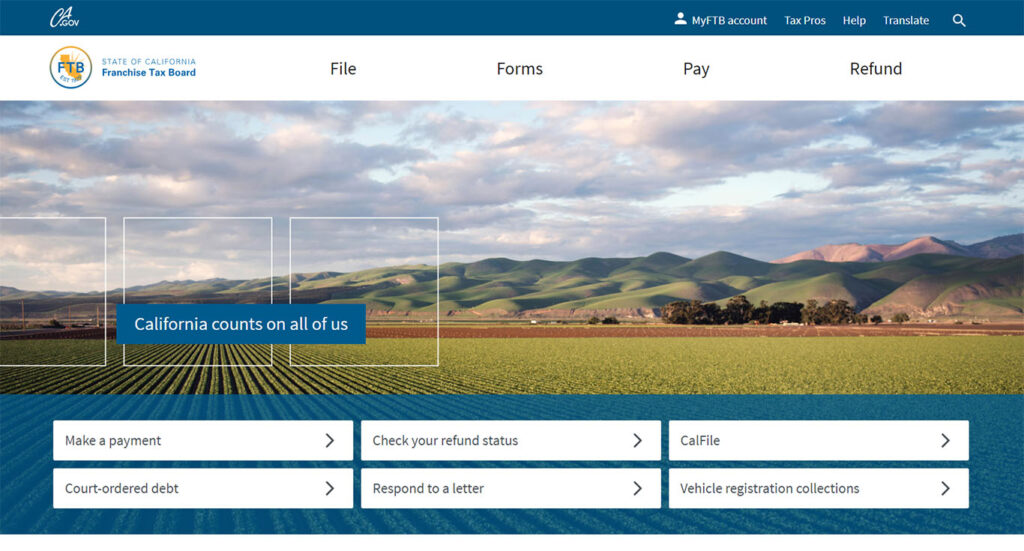Do you want to stay up-to-date on the latest developments and modifications in California State Taxes for 2023? If so, get ready to navigate the intricate realm of taxes in the Golden State. Explore crucial tips, strategies, and updates to optimize your tax situation — from understanding your tax obligations to exploring effective tax planning strategies, this guide is here to assist you. So, grab a cup of coffee, fasten your seatbelt, and embark on this tax journey.
- Explore the Different Tax Rates and Income Brackets
- Learn About the Various Deductions and Credits
- Understand the Important Dates and Deadlines for Filing
- Familiarize Yourself With the Specific Tax Forms and Documentation
- Discover the Rules and Guidelines for Tax Withholding From Wages and Making Estimated Tax Payments
- Stay Informed About any Recent Changes or Updates
- Explore Effective Tax Planning Strategies
Ready? Let’s break it down!
1. Explore the Different Tax Rates and Income Brackets
To break down the complexities of California State Taxes for 2023, dissect the various tax rates and income brackets. California has a progressive tax system, which means that the tax rates increase as your income increases. This ensures that individuals with higher incomes pay a higher percentage of their income in taxes. The tax rates range from 1% to 13.3% for the highest-income earners in 2023.
Also, California has different income brackets that determine the tax rate applicable to your income. Your filing status determines the division of these brackets, such as single, married filing jointly, or head of household. Each bracket has a corresponding tax rate. As your income increases and falls into a higher bracket, the tax rate for that bracket applies to the additional income.
It’s important to note that the income brackets and tax rates can change from year to year, so it’s crucial to stay updated with the latest information from official sources.
2. Learn About the Various Deductions and Credits
When it comes to California State Taxes in 2023, it’s important to be aware of the various deductions and credits that can help you save money. Remember, deductions are expenses that you can subtract from your taxable income, reducing the amount of income that is subject to tax.
In California, you may be eligible for deductions such as mortgage interest, property taxes, medical expenses, and certain business expenses. By taking advantage of these deductions, you can potentially lower your overall tax liability.
Tax credits are even more valuable than deductions because they directly reduce the amount of tax you owe, dollar for dollar. California offers various credits, such as the Earned Income Tax Credit (EITC), Child and Dependent Care Credit, and Education Credits. These credits can provide significant savings and help offset your tax bill.
3. Understand the Important Dates and Deadlines for Filing
To ensure you meet your tax obligations on time, it’s crucial to understand the important dates and deadlines for filing California State Taxes in 2023. Keep in mind that the deadline for filing your individual income tax return in California is typically April 15th.
However, if April 15th falls on a weekend or holiday, the deadline may be extended to the next business day. It’s important to note that you can request a filing extension if you need more time to prepare your return. The extension allows you to file your return by October 15th, but it doesn’t grant an extension for paying any taxes owed.
If you have income that is not subject to withholding, such as self-employment income or rental income, you may need to make estimated tax payments throughout the year. The due dates for estimated tax payments in California are generally April 15th, June 15th, September 15th, and January 15th of the following year.
>>>PRO TIPS: Texas State Taxes: 2023 Update
4. Familiarize Yourself With the Specific Tax Forms and Documentation
When it comes to filing California State Taxes in 2023, it’s important to familiarize yourself with the specific tax forms and documentation required. Here’s what you need to do:
- Complete Form 540: This primary individual income tax form for California residents necessitates accurate reporting of income, deductions, credits, and the calculation of tax liability.
- Utilize Schedule CA: Reconcile discrepancies between your federal and state income tax returns with this form, ensuring accurate reporting for California state tax purposes.
- Use Form 540-ES: If you earn income not subject to withholding, like self-employment income, calculate and pay estimated taxes throughout the year using this form.
- Compile Supporting Documentation: Gather essential supporting documentation, including W-2 forms, 1099 forms, deduction receipts, and other documents supporting the information on your tax forms. These may be required for verification or in case of an audit.
Review specific instructions for each form, ensuring you have the latest versions from the California Franchise Tax Board. Consider consulting a tax professional or using tax software for accurate completion, and maximizing deductions, and credits.
By familiarizing yourself with the required forms and documentation for California State Taxes in 2023, you’ll better fulfill your tax obligations and accurately file on time.
5. Discover the Rules and Guidelines for Tax Withholding From Wages and Making Estimated Tax Payments
To discover the rules and guidelines for tax withholding from wages and making estimated tax payments in California State Taxes, follow these steps to stay on top of your taxes:
First, determine your filing status and calculate your taxable income. This will help you know which tax bracket you fall into and how much you owe.
If you’re an employee, make sure your employer withholds the correct amount of state taxes from your wages. Fill out a California State W-4 form to ensure accurate withholding.
For those who are self-employed or receive income without withholding, it’s essential to make estimated tax payments throughout the year. Use Form 540-ES to calculate your estimated tax and make quarterly payments.
Stay organized by keeping track of your income, expenses, and any deductions or credits you might qualify for. Being organized will make the tax filing process smoother and prevent errors.
6. Stay Informed About any Recent Changes or Updates
To make sure you’re up to date with any recent changes or updates in California, stay connected and vigilant for any news or updates related to California State Taxes. This could be changes in tax laws, new regulations, or updates from the California Franchise Tax Board.
Make it a habit to check the official website of the California Franchise Tax Board regularly. They provide a wealth of information on tax updates, forms, and resources to keep you informed.
Don’t forget to subscribe to newsletters or email updates from the California Franchise Tax Board. This way, you’ll receive important notifications directly in your inbox, ensuring you never miss out on any crucial updates.
Follow reliable sources such as reputable tax experts, tax blogs, or news outlets that cover California State Taxes. They often provide insightful analysis and valuable information on recent changes and updates.
And if you have specific questions or concerns about recent changes, don’t hesitate to consult a tax professional. They can provide personalized advice tailored to your unique circumstances.
>>>GET SMARTER: Kentucky State Taxes: 2023 Update
7. Explore Effective Tax Planning Strategies
When it comes to exploring effective tax planning strategies in California State Taxes for the 2023 update, discover how you can make the most of your tax situation:
Start by taking advantage of state-specific deductions. Identify credits like the California Earned Income Tax Credit (CalEITC) to boost your refunds. Stay updated on the latest changes for 2023 to ensure you’re not missing out on new opportunities.
Consider strategic investments to minimize your taxable income. Explore tax-efficient retirement contributions and take advantage of California’s tax-favored accounts. Leverage opportunities for business owners, such as Small Business Stock Exclusion. Review your property tax assessments and challenge discrepancies for potential savings.
Collaborate with a tax professional to navigate complex regulations and optimize your strategy. Keep meticulous records to support your claims and ensure a smooth filing process. By staying proactive and informed, you’ll pave the way for a more tax-friendly future in the Golden State.
Recap
To get ahead in 2023 with California State Taxes, dive into different tax rates and income brackets to optimize your financial strategy. Uncover valuable deductions and credits unique to the state. Mark your calendar with essential filing dates and deadlines to avoid last-minute stress.
Master specific tax forms and documentation requirements for a seamless filing process. Navigate rules for tax withholding from wages and making estimated payments. Stay updated on recent changes and updates to adapt your approach. Finally, explore effective tax planning strategies to maximize your savings.
This post is to be used for informational purposes only and does not constitute legal, business, or tax advice. Each person should consult his or her own attorney, business advisor, or tax advisor with respect to matters referenced in this post. . For comprehensive tax, legal or financial advice, always contact a qualified professional in your area. S’witty Kiwi assumes no liability for actions taken in reliance upon the information contained herein.









No Comment! Be the first one.